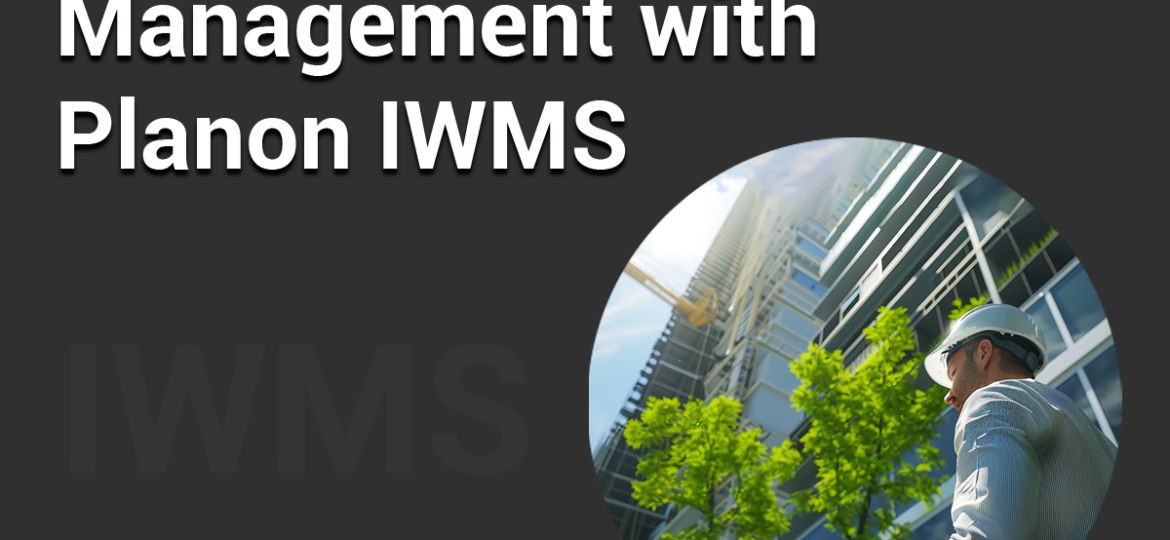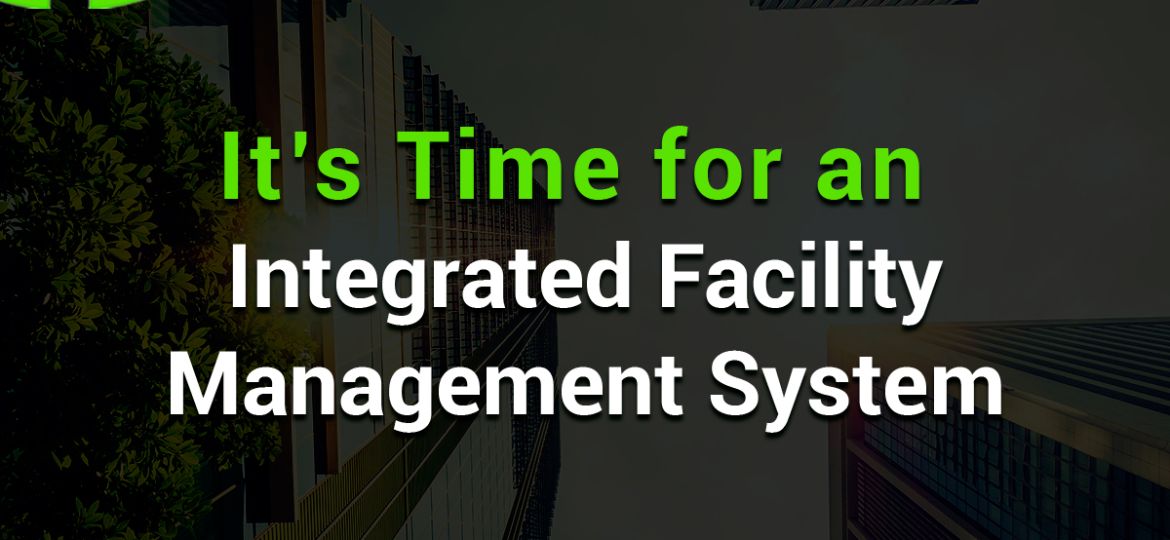
Understanding Integrated Workplace Management Systems (IWMS):
In today’s fast-paced business environment, managing facilities and workplaces has become increasingly complex. Organizations are seeking integrated solutions that can streamline operations, enhance efficiency, and drive better decision-making. This is where Integrated Workplace Management Systems (IWMS) come into play. The future of IWMS is promising, with trends indicating a move towards more unified, data-driven, and flexible solutions. In this blog, we will explore the concept of IWMS, discuss its benefits, and provide a comprehensive definition while highlighting Planon’s role in revolutionizing workplace management through its advanced Planon IWMS analytics.
IWMS Definition
An Integrated Workplace Management System (IWMS) is a software platform that integrates multiple aspects of facility management into a single, unified system. These aspects typically include real estate management, maintenance management, space and workplace management, sustainability, and asset and maintenance management. Unlike other solutions that require separate systems for each function, IWMS combines all these modules into one cohesive platform. The primary goal of an IWMS is to provide a holistic view of an organization’s operations, enabling more efficient management of resources and better decision-making.
The All-in-One Advantage of IWMS
One of the most compelling aspects of IWMS is its ability to integrate all critical facility management functions into a single system. Many organizations struggle with having disparate systems for real estate, maintenance, space management, and sustainability. This fragmentation can lead to inefficiencies, increased costs, and difficulties in obtaining a comprehensive view of operations. IWMS addresses these challenges by offering an all-in-one solution.
Centralized Data Management
By consolidating all facility data into one system, IWMS ensures easy access and improved decision-making. This centralization eliminates the need to juggle multiple systems and reduces the risk of data silos.
Integrated Reports and Dashboards
An integrated IWMS provides comprehensive reports and dashboards that consolidate data from all modules. This integration allows for real-time analytics and insights that would be impossible to achieve with multiple, disconnected systems. Here are some examples of how integrated reports and dashboards can be transformative:
Real Estate and Asset Management Insights
Combining data from the real estate module and asset management provides insights into property performance and asset utilization. For example, a dashboard can show the correlation between property occupancy rates and the condition of assets within those properties. This can help prioritize maintenance for high-traffic areas, ensuring assets are well-maintained where they are most needed.
Facility Management with Asset Management
Integrated reports can highlight how maintenance activities impact overall facility performance. By analyzing data on asset downtime, maintenance costs, and facility operations, managers can identify trends and inefficiencies. For instance, a report could reveal that certain assets repeatedly fail, leading to costly repairs and operational disruptions. This insight enables proactive measures such as upgrading or replacing problematic assets.
Asset Management with Sustainability Insights
IWMS dashboards can integrate asset performance data with sustainability metrics, providing a comprehensive view of an organization’s environmental impact. For example, a dashboard might show energy consumption trends for different assets, identifying which equipment is the least energy-efficient. This allows organizations to target upgrades or replacements that will have the greatest impact on reducing their carbon footprint.
Automated Workflows
IWMS streamlines processes by automating routine tasks across different functions. This reduces manual effort, minimizes errors, and ensures consistency in operations.
Real-time Analytics
With all data housed in a single system, IWMS provides comprehensive real-time analytics. This enables better space planning, optimized resource utilization, and informed decision-making. Real-time data allows organizations to respond quickly to changes and make proactive decisions to improve efficiency and performance.
Scalability
An integrated system like IWMS can easily adapt to the growing needs of any organization. This scalability ensures long-term usability and supports organizational growth. As organizations expand, IWMS can accommodate new facilities, assets, and employees without the need for significant additional investment.
User-Friendly Interface
Designed for ease of use, IWMS reduces the learning curve and increases adoption rates among users. A unified interface means that staff only need to learn one system rather than multiple separate ones. This simplification enhances user experience and ensures that employees can quickly become proficient with the system.
Benefits of IWMS
Implementing an IWMS offers a range of benefits that enhance the efficiency and effectiveness of facility management.
Enhanced Efficiency and Productivity
By integrating various functions into a single platform, IWMS eliminates data silos and streamlines processes. This leads to more efficient use of resources, reduced duplication of effort, and faster response times. For instance, with Planon IWMS analytics, organizations can track real-time data across different departments, enabling quicker and more informed decision-making.
Cost Savings
IWMS helps organizations achieve significant cost savings by optimizing resource allocation and reducing operational expenses. With integrated maintenance and asset management, for example, organizations can implement preventive and predictive maintenance strategies, reducing downtime and extending the life of assets. Planon’s IWMS trends show that companies using these systems can reduce maintenance costs by up to 20%.
Improved Space Utilization
Effective space management is a critical component of IWMS. Organizations can analyze how space is utilized, identify underutilized areas, and make data-driven decisions to optimize their workspace. Planon’s workplace management innovations include advanced space planning tools that help organizations maximize the efficiency of their work environments, adapting to changing needs such as the rise of hybrid work models.
Sustainability and Energy Efficiency
Sustainability is becoming increasingly important for organizations worldwide. IWMS provides tools for monitoring and improving energy efficiency, reducing carbon footprints, and achieving sustainability goals. Planon IWMS includes comprehensive energy management features, allowing organizations to track energy consumption, identify inefficiencies, and implement corrective measures.
Enhanced Decision Making
A major advantage of IWMS is the ability to make data-driven decisions. By providing a unified source of truth, IWMS ensures that all stakeholders have access to accurate and up-to-date information. Detailed insights into various operational aspects, from space utilization to maintenance performance, asset and maintenance management, and energy consumption, empower organizations to make informed decisions.
Integrated Workplace Management Systems Advantages
IWMS integration offers significant advantages across various departments within an organization.
Enhanced Collaboration and Decision-Making
By integrating different functions such as real estate, maintenance, asset and maintenance management, and space management, IWMS fosters enhanced collaboration among departments. This unified approach leads to more coordinated decision-making and efficient resource allocation.
IWMS Features
IWMS software solutions come with a range of features designed to streamline facility management processes.
Key Features of IWMS Software Solutions
- Space Management: Optimizes the use of office spaces and meeting rooms.
- Lease Administration: Manages real estate leases and ensures compliance with lease agreements.
- Maintenance Management: Schedules preventive and predictive maintenance tasks to reduce downtime.
- Energy Management: Monitors and optimizes energy usage to improve sustainability.
- Asset and Maintenance Management: Tracks and manages the lifecycle of all assets, ensuring efficient utilization and maintenance.
IWMS Implementation Process
Best Practices for Successful IWMS Deployment
- Comprehensive Needs Analysis: Conduct a thorough analysis to understand the unique requirements of your organization.
- Project Planning: Develop a detailed project plan outlining timelines, milestones, and responsibilities. A well-structured plan ensures that all stakeholders are on the same page and that the implementation stays on track. Include contingency plans to address potential challenges.
- Change Management: Implement a change management strategy to address concerns and ensure a smooth transition. Communicate the benefits of IWMS to all stakeholders and provide training to help employees adapt to the new system. Address resistance to change by involving key stakeholders in the planning process.
- User Training and Support: Offer ongoing training and support to help users become proficient with the new system. Provide resources such as user manuals, online tutorials, and helpdesk support to assist employees in using IWMS effectively. Regular training sessions can keep users updated on new features and best practices.
- Monitoring and Evaluation: Establish metrics to monitor the success of the implementation and make data-driven adjustments. Track key performance indicators (KPIs) such as system adoption rates, user satisfaction, and operational efficiency. Use this data to identify areas for improvement and make necessary adjustments.
- Feedback Loop: Create a feedback loop to continuously gather input from users and stakeholders for improvements. Regularly solicit feedback from employees and use this information to enhance the system and address any issues. This ongoing process ensures that IWMS continues to meet the evolving needs of the organization.
- Lease Administration: Manages real estate leases and ensures compliance with lease agreements.
- Maintenance Management: Schedules preventive and predictive maintenance tasks to reduce downtime.
- Energy Management: Monitors and optimizes energy usage to improve sustainability.
- Asset and Maintenance Management: Tracks and manages the lifecycle of all assets, ensuring efficient utilization and maintenance.
IWMS Software Comparison
When selecting an IWMS solution, it’s essential to the best fit for your organization.
Key Factors to Consider in IWMS Software Comparison
- Functionality: Ensure the software meets all your facility management needs. Look for a comprehensive solution that includes all the necessary modules such as real estate management, maintenance management, space and workplace management, sustainability, and asset and maintenance management.
- User-Friendliness: Choose a solution that is easy to use and adopt. An intuitive interface and user-friendly design are crucial for ensuring that employees can quickly become proficient with the system.
- Scalability: Ensure the software can grow with your organization. Look for a solution that can accommodate your organization’s future needs and support expansion without requiring significant additional investment.
- Support and Training: Look for comprehensive support and training options. A vendor that offers robust customer support and ongoing training can help ensure the success of the implementation and maximize the value of the IWMS.
- Lease Administration: Manages real estate leases and ensures compliance with lease agreements.
- Maintenance Management: Schedules preventive and predictive maintenance tasks to reduce downtime.
- Energy Management: Monitors and optimizes energy usage to improve sustainability.
- Asset and Maintenance Management: Tracks and manages the lifecycle of all assets, ensuring efficient utilization and maintenance.
IWMS Solutions for Businesses
IWMS solutions can be tailored to meet the specific needs and requirements of various businesses. Different industries have unique facility management needs. IWMS solutions should be customized to address these specific requirements effectively.
- User-Friendliness: Choose a solution that is easy to use and adopt. An intuitive interface and user-friendly design are crucial for ensuring that employees can quickly become proficient with the system.
- Scalability: Ensure the software can grow with your organization. Look for a solution that can accommodate your organization’s future needs and support expansion without requiring significant additional investment.
- Support and Training: Look for comprehensive support and training options. A vendor that offers robust customer support and ongoing training can help ensure the success of the implementation and maximize the value of the IWMS.
- Lease Administration: Manages real estate leases and ensures compliance with lease agreements.
- Maintenance Management: Schedules preventive and predictive maintenance tasks to reduce downtime.
- Energy Management: Monitors and optimizes energy usage to improve sustainability.
- Asset and Maintenance Management: Tracks and manages the lifecycle of all assets, ensuring efficient utilization and maintenance.
Case Studies of Successful IWMS Implementations
- Healthcare: A hospital used Planon IWMS to streamline maintenance operations, resulting in a 20% reduction in operational costs.
- Education: A university implemented Planon IWMS for space and asset management, optimizing classroom usage and saving $1 million annually.
- Corporate: A multinational corporation used Planon IWMS to enhance workplace and asset management, improving employee satisfaction by 30%.
- User-Friendliness: Choose a solution that is easy to use and adopt. An intuitive interface and user-friendly design are crucial for ensuring that employees can quickly become proficient with the system.
- Scalability: Ensure the software can grow with your organization. Look for a solution that can accommodate your organization’s future needs and support expansion without requiring significant additional investment.
- Support and Training: Look for comprehensive support and training options. A vendor that offers robust customer support and ongoing training can help ensure the success of the implementation and maximize the value of the IWMS.
- Lease Administration: Manages real estate leases and ensures compliance with lease agreements.
- Maintenance Management: Schedules preventive and predictive maintenance tasks to reduce downtime.
- Energy Management: Monitors and optimizes energy usage to improve sustainability.
- Asset and Maintenance Management: Tracks and manages the lifecycle of all assets, ensuring efficient utilization and maintenance.
IWMS Industry Trends
Staying informed about IWMS industry trends is crucial for leveraging the latest innovations.
- Education: A university implemented Planon IWMS for space and asset management, optimizing classroom usage and saving $1 million annually.
- Corporate: A multinational corporation used Planon IWMS to enhance workplace and asset management, improving employee satisfaction by 30%.
- User-Friendliness: Choose a solution that is easy to use and adopt. An intuitive interface and user-friendly design are crucial for ensuring that employees can quickly become proficient with the system.
- Scalability: Ensure the software can grow with your organization. Look for a solution that can accommodate your organization’s future needs and support expansion without requiring significant additional investment.
- Support and Training: Look for comprehensive support and training options. A vendor that offers robust customer support and ongoing training can help ensure the success of the implementation and maximize the value of the IWMS.
- Lease Administration: Manages real estate leases and ensures compliance with lease agreements.
- Maintenance Management: Schedules preventive and predictive maintenance tasks to reduce downtime.
- Energy Management: Monitors and optimizes energy usage to improve sustainability.
- Asset and Maintenance Management: Tracks and manages the lifecycle of all assets, ensuring efficient utilization and maintenance.
Emerging Trends in the IWMS Industry
- AI and Machine Learning Integration: Enhances predictive maintenance and space optimization. AI and machine learning can analyze vast amounts of data to identify patterns and predict potential issues before they occur. This proactive approach can improve efficiency and reduce costs.
- IoT and Smart Building Technologies: Provides real-time data and automates processes. The Internet of Things (IoT) enables devices to communicate with each other and with IWMS, providing real-time insights and automating routine tasks. Smart building technologies can optimize energy usage, enhance security, and improve occupant comfort.
- Sustainability Initiatives: Focuses on reducing carbon footprints and improving energy efficiency. IWMS can support sustainability goals by monitoring energy consumption, tracking waste reduction efforts, and promoting green building practices. Organizations can use IWMS to measure and report on their environmental impact.
- Education: A university implemented Planon IWMS for space and asset management, optimizing classroom usage and saving $1 million annually.
- Corporate: A multinational corporation used Planon IWMS to enhance workplace and asset management, improving employee satisfaction by 30%.
- User-Friendliness: Choose a solution that is easy to use and adopt. An intuitive interface and user-friendly design are crucial for ensuring that employees can quickly become proficient with the system.
- Scalability: Ensure the software can grow with your organization. Look for a solution that can accommodate your organization’s future needs and support expansion without requiring significant additional investment.
- Support and Training: Look for comprehensive support and training options. A vendor that offers robust customer support and ongoing training can help ensure the success of the implementation and maximize the value of the IWMS.
- Lease Administration: Manages real estate leases and ensures compliance with lease agreements.
- Maintenance Management: Schedules preventive and predictive maintenance tasks to reduce downtime.
- Energy Management: Monitors and optimizes energy usage to improve sustainability.
- Asset and Maintenance Management: Tracks and manages the lifecycle of all assets, ensuring efficient utilization and maintenance.
IWMS Case Studies
Real-world examples highlight the benefits of IWMS adoption.
Analyzing Outcomes and ROI
These case studies demonstrate significant improvements in operational efficiency, cost savings, and resource utilization, showcasing the tangible benefits of implementing IWMS. Organizations across various industries have successfully used IWMS to streamline operations, reduce costs, and enhance decision-making.
IWMS Best Practices
Maximizing the effectiveness of IWMS requires following best practices and addressing common challenges.
Actionable Tips for IWMS Optimization
- Regular Training: Keep staff updated on new features and best practices. Continuous learning ensures that employees can fully leverage the capabilities of IWMS and stay informed about the latest developments.
- Continuous Monitoring: Regularly review system performance and make necessary adjustments. Monitoring key performance indicators and user feedback helps identify areas for improvement and optimize the system’s performance.
- Stakeholder Engagement: Involve all relevant parties in the planning and implementation process. Engaging stakeholders from different departments ensures that the IWMS meets the needs of the entire organization and fosters collaboration.
Conclusion
Integrated Workplace Management Systems (IWMS) represent the future of facility management, offering unparalleled benefits in terms of efficiency, cost savings, and data-driven decision-making. Planon IWMS stands out as a leader in this field, providing a comprehensive, innovative, and flexible solution that addresses the diverse needs of modern organizations. By leveraging the power of Planon IWMS analytics and staying ahead of IWMS trends, businesses can transform their facility management practices and achieve sustainable growth.
Are you ready to transform your facility and asset management with the future of IWMS? Explore how Planon IWMS can drive efficiency, sustainability, and innovation in your organization. Contact us today to schedule a demo and see Planon IWMS analytics in action. Don’t miss out on the latest IWMS trends and workplace management innovations that can take your business to the next level. Visit our website to learn more and get started on your journey towards smarter facility and asset management with Planon IWMS.




